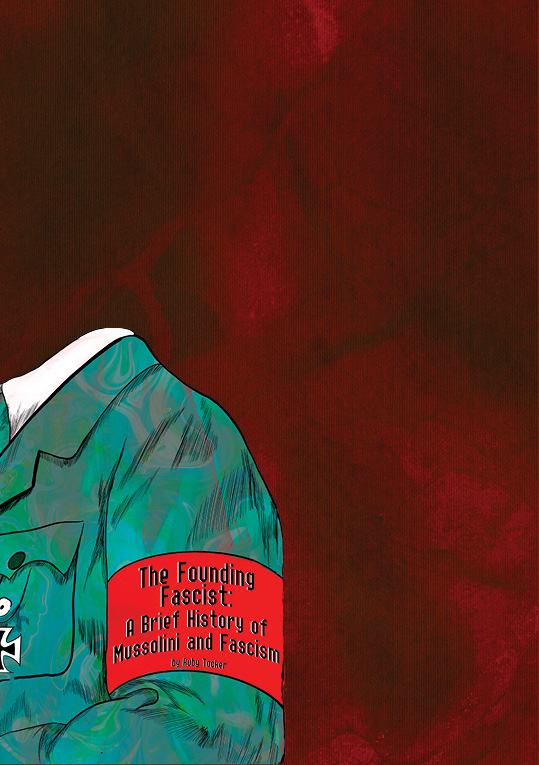
Defined simply, fascism is a political ideology that reflects authoritarian, forcibly monolithic, and ultranationalist beliefs. Often assumed under a dictator, the far-right mold is linked to militarism, autocratic action, and the fatal suppression of minority groups.
While this extremist model isn’t at all new, the term fascism was launched in current times. Namely, the expression was pulled from the word fascio, or bundle in Italian, referring to a bundle of people. The predominant origins, however, lie in the Ancient Roman word fasces, or a bundle of wood with tribal worthiness. Hence, the term was officially connected to the cause in 1919. At an initial rally for Fasci Italiani di Combattimento, an Italian movement born from the ashes of former failed groups, Benito Mussolini made a uniting statement. He claimed membership to this new tenet “commits all fascists to sabotaging the candidacies of the neutralists of all parties by any means necessary”. Thus, fascism became the hottest political term.
Inspired by the alluring Mussolini, the movement advanced across Europe. It touched England, Austria, Croatia, and infamously, Germany, stirring up many power hungry men. While some remained local leaders, others became global oppressors, dulling many minds with mass brutality, suppression, and hate.
Moreover, Benito Mussolini pioneered fascism. As accredited above, the former socialist party member and journalist settled and defined the political term. In 1922, following his appointment to prime minister of Italy, he led the first fascist regime, popularising revolutionary nationalism under a one-party governing body. Thus, Mussolini instilled fascism to replace social democracy. In his eyes, the latter was a failed system that supported freedom of expression and the multi-party model. He rationalised that, under politically fascist rule, Italy would be free of class consciousness and could be arranged by state power. In short, fascism emphasised nation over class, allowing sole worship of a government. The Italian tyrant also pushed a puritanical society. Mussolini saw difference as threatening to national unity and promoted violence as the solution. While race-focused-fascism is a narrative controlled by Hitler, the Italian’s weaponised colonialism to combat the white decline and brutalise people of colour, suggesting eugenics and more. Fundamentally, fascism tells a traditionalist tale that is often forgotten.
Not only did Mussolini assume the movement, he became the blueprint for succeeding fascist figureheads. Ruth Ben-Ghiat, a Mussolini enthusiast and professor at New York University, explains his political prowess. “Benito Mussolini came up with the term fascism, he created the first one-party fascist state, and he set the playbook and template for everything that came after.” Additionally, Mussolini initiated the cult of personality we often associate with ruthless rulers. While Lenin and Stalin are usually connected to the concept, the Italian was in the newsreels, stripping his shirt off at rallies, and idolised by many cheering fans; Mussolini was fascism. He has also been accused of imitating Hitler. This, however, is an unsound fallacy. Ben-Ghiat illustrates, “Mussolini was in power 11 years before Hitler. He had things all worked out by the time Hitler came to power.” Initially, “Hitler was a total loser. No one wanted to buy Mein Kampf. No one was interested in him. Then the Great Depression came, and he boomed.”
Then, Mussolini fell, the Axis powers crumbled, and the first phase of fascism was diminished. With little omission, like Franco’s Spain, the initial regimes of Europe had been crushed, but the movement still ran rampant across the world. Ben-Ghiat defines it as “a transnational movement”, stating “It’s really not understood how influential Italian fascism was, because you had Nazism early on, but there were fascist movements in America, in Switzerland, in France, in Spain, and then fascism spread in Argentina.” Hence, through coded language, technological advancement, and lurid support, fascism thrived in new channels. Indeed, more than a century later, it’s like looking in a Mussolini-era mirror. For example, Mussolini’s fear of a white decline is wildly similar to great replacement theory, a far-right conspiracy that asserts the white race is being systematically replaced by ethnic minorities. Locally, the Christchurch Mosque shooter cited this theory as a white genocide in his harrowing manifesto, labelling himself as an ally to fascism.
Even Italy is seeing fascism reborn. In 1994, Silvio Berlusconi was admitted prime minister and reinstalled the far-right model, allowing neo-fascists a chair in government. In current times, Antonio Tajani, the President of the E.U. Parliament, hailed Mussolini by commenting “if we must be honest, he built roads, bridges, buildings. He reclaimed many parts of our Italy.” In 2023, the queer community was harassed with a surrogacy bill that threatened to make starting a family a universal crime.
Fascism has returned in a fearfully similar form. Hyper-nationalism, conspiratorial thought, a leading saviour, anti-feminism, anti-queer, and anti-left; the narrative has remained the same. Thus, while Mussolini lies beyond the grave, his potent ideology continues to bloom.